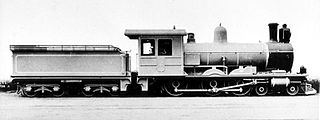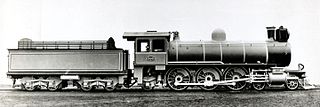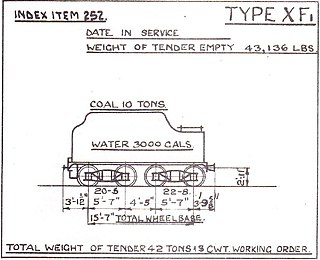
The South African type YE tender was a steam locomotive tender from the pre-Union era in the Cape of Good Hope.

The South African type YE1 tender was a steam locomotive tender from the pre-Union era in the Cape of Good Hope.

The South African type XF tender was a steam locomotive tender from the pre-Union era in Transvaal.

The South African type XD tender was a steam locomotive tender from the pre-Union era in the Cape of Good Hope.

The South African type XM3 tender was a steam locomotive tender from the pre-Union era in the Transvaal.
The South African type XM2 tender was a steam locomotive tender from the pre-Union era in Transvaal.

The South African type XE1 tender was a steam locomotive tender from the pre-Union era in the Cape of Good Hope.

The South African type XF2 tender was a steam locomotive tender from the pre-Union era in the Cape of Good Hope.

The South African type XM1 tender was a steam locomotive tender.
The South African type XC tender was a steam locomotive tender from the pre-Union era in Transvaal.

The South African type XC1 tender was a steam locomotive tender from the pre-Union era in the Cape of Good Hope.

The South African type XE tender was a steam locomotive tender.
The South African type XJ tender was a steam locomotive tender.
The South African type XS tender was a steam locomotive tender from the pre-Union era in Transvaal.

The South African type XM4 tender was a steam locomotive tender.
The South African type LP tender was a steam locomotive tender.

The South African type XM tender was a steam locomotive tender.

The South African type XF1 tender was a steam locomotive tender.



















